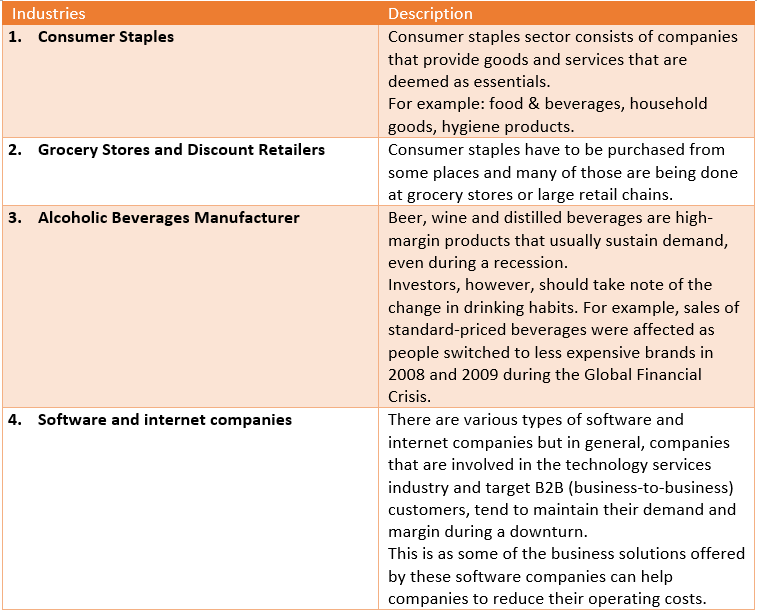5 Top Investment Strategies for a Bear Market
August 22, 2022

The stock market has been very volatile this year as rising interest rates and higher inflation dampen market sentiment.
While we have seen some recovery over the last month or so, most investors also remain wary over the risk of a recession in the near term.
So, here are five investing strategies that any investor can deploy during this ongoing bear market.
1. Buy companies with strong balance sheets or business models
A good investment strategy during a bear market is to invest in companies with strong balance sheets.
The balance sheet refers to the company’s assets, liabilities and shareholders’ equity at a specific point in time.
It basically provides a snapshot of a company’s finances, such as what it owns and owes as well as the amount invested by shareholders.
Generally, companies with strong balance sheets have a net cash position and have the capacity to comfortably cover their short-term borrowings.
Companies in different industries have different borrowing levels. Therefore, it is vital to do a peer comparison when looking into a company’s balance sheet.
Given the rising interest rate environment, companies with fixed-rate debt – as compared to those with floating-rate debt – will also perform better as the risk of rising interest expense is lower.
In general, companies that have low debt, healthy cash flows and are profitable in nature, will perform better during a bear market.
The bear market provides opportunities for long-term investors to accumulate some of these high-quality stocks at a discounted price.
2. Invest in recession-resistant industries
Every industry performs differently in varying economic environments.
While it might be surprising for investors, some industries perform relatively well during recessions.
Investors could take advantage of the market weakness to build up some of these recession-resistant industries in their portfolio.
 Source: ProsperUs
Source: ProsperUs
3. Use strategic asset allocation strategies
One of the best ways to invest during a bear market is to deploy strategies that minimise the involvement of emotions.
Long-term investors can tap on a strategic asset allocation (SAA) strategy to maintain a disciplined approach to investing.
SAA is a portfolio strategy whereby investors set target allocations for various asset classes and industries and rebalance the portfolio periodically.
By rebalancing one’s portfolio based on a set target, this helps to eliminate emotional investing such as fear-of-missing-out (FOMO) or fear, uncertainty and doubt (FUD).
Instead, investors will increase their holdings during market weakness and take profit when the market rebounds.
4. Sell covered-call positions as an income strategy
Another investment strategy in a bear market is to take advantage of options to generate income during a bear market.
This can be achieved by using a covered call strategy.
A covered call strategy is used when an investor holds a long position in a stock and sells a call option on those same assets.
You may read more about the covered call strategy here.
As share prices usually trend downward during a bear market, this allows investors to sell the call options and receive a premium.
As long as the share price doesn’t rise above the strike price, investors will earn the premium as income.
5. Increase your investments during the recovery
In every recession, there is also a recovery. When the economy is moving from recession to recovery, investors should adjust their strategies.
This includes increasing your investment portion to ride on the market recovery cycle.
The downside risk is the difficulty to timing the market recovery.
This is why investors should consider deploying this strategy with the other 4 strategies above to hedge the downside risk.
Bear markets can provide the best opportunities
While a bear market is a difficult time for investors to make rational investment decisions, it also coincides with the best opportunities.
Whether you’re a long-term investor looking to buy into a high-quality assets at a discounted price, or a trader who wants to take advantage of the different market thematics to profit, there are opportunities for you to thrive in a bear market.
There is, however, a need to act cautiously, remain vigilant in your investment decisions and minimise the involvement of your emotions in decision making.
Disclaimer: ProsperUs Investment Coach Billy Toh doesn’t own shares of any companies mentioned.

Billy Toh
Billy is deeply committed to making investment accessible and understandable to everyone, a principle that drives his engagement with the capital markets and his long-term investment strategies. He is currently the Head of Content & Investment Lead for Prosperus and a SGX Academy Trainer. His extensive experience spans roles as an economist at RHB Investment Bank, focusing on the Thailand and Philippines markets, and as a financial journalist at The Edge Malaysia. Additionally, his background includes valuable time spent in an asset management firm. Outside of finance, Billy enjoys meaningful conversations over coffee, keeps fit as a fitness enthusiast, and has a keen interest in technology.







